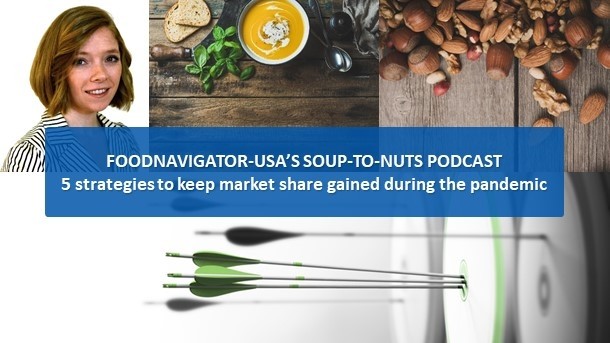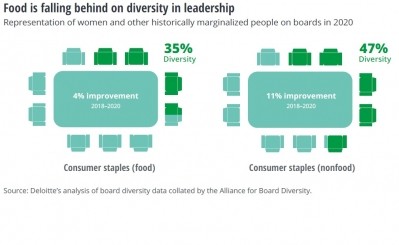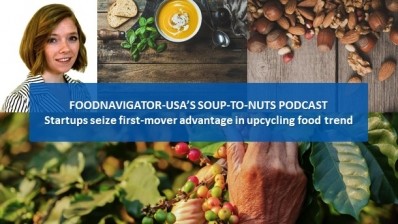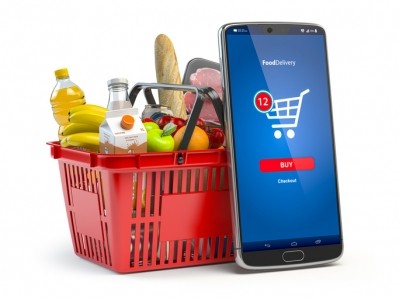Soup-To-Nuts Podcast: 5 strategies to keep market share gains from the pandemic, drive new growth

In Deloitte’s recently released 2021 Consumer Products Industry Outlook, analysts with the professional services company acknowledge the pandemic’s impact on businesses and individuals has been uneven and recovery will hinge on uncontrollable factors, such as the rollout of a vaccine and the full reopening of schools, offices and restaurants, but it adds “a pandemic damaged economy can still be a good one for many CPG companies.”
Indeed, many established packaged food and beverage brands saw sales spike in 2020 as the pandemic forced most Americans to create new habits around cooking and eating at home. And while many industry players faced challenges related to supply chain disruptions, product shortages, a shift to ecommerce, and heightened consumer awareness of corporate social responsibility, they also implemented fundamental changes in how they do business that they expect will begin to pay out this year.
In this episode of FoodNavigator-USA’s Soup-To-Nuts podcast, Barb Renner, vice chairman and US Consumer Products Leader at Deloitte details five strategies that CPG executives are adopting, which promise to make this year better than last and next year better than this. These include new go-to-market strategies, rapid adoption of digital, supply chain reinforcement, a realignment of business foundations and a renewed commitment to connect purpose to profit.
[Editor’s note: Never miss another episode of FoodNavigator-USA’s Soup-To-Nuts podcast – subscribe today.]
Resetting go-to-market strategies
Over the course of 2020, many of the go-to-market strategies that companies relied on to build brand awareness, drive initial trial and sustain repeat purchases disappeared virtually overnight when the pandemic was declared. Social distancing put an abrupt end to in-store sampling, increased demand for food that outpaced supply halted in-store promotions, and fear of exposure drove more consumers to shop online complicating discovery.
In response, Deloitte found four out of five CPG players are rethinking consumer segmentation and reprioritizing channel distribution – but only half are confident in their current capabilities to do so effectively.
Of particular interest – and consternation – is deciding how best to engage effectively with consumers online either directly or through a third party retailer. According to Deloitte’s research, one in three consumer products executives say they are focusing on DTC channels, which if well executed could help them build market share and reduce the threat of competition by reducing consumer exposure to it.
But, as Renner adds, there are logistical trade-offs.
“Historically the cost to get a direct-to-consumer channel, the cost of acquiring a consumer that way was very expensive. I do believe with all the online shopping that’s been happening over the last 10 months that the cost is going down,” but it is still high and its stickiness is unclear, Renner said.
In addition, she notes many CPG companies aren’t set up with a pick, pack and ship model, but there are ways to attain that through partnerships with retailers and other players.
Hand-in-hand with investing in ecommerce is embracing a digital-first marketing approach, which Deloitte reports also is accelerating as companies shift spending from traditional advertising to social activations and digital campaigns.
Accelerating the shift to digital
Online sales and marketing aren’t the only places where consumer products companies are accelerating the shift to digital. Renner said many executives this year also plan to focus on their internal digital capabilities to support remote work and to reinforce their supply chains.
“Three out of four companies that we surveyed as part of the Outlook for this year believe that digital will be important for 2012. We heard many announcing to the public that they were doubling down on their digital spend and making investments. But in the same survey … only one in four rated their maturity as high in digital,” Renner said.
In addition to needing digital development, companies must navigate many aspects of ‘digital,’ not just the consumer facing parts, but the backroom as well – including cultivating a strong company culture while also facilitating remote working, and facilitating improvements even when in-person meetings are not an option.
Building supply chain resilience
A big lesson learned the hard way in 2020 was the need for supply chain resilience, which was tested not only by the pandemic but by geopolitical events like Brexit and the US-China trade as well climate-related disasters.
Deloitte found more than 95% of consumer products executives it surveyed cited increasing supply chain resiliency as important or very important for the coming year and nine in 10 committed to making significant investment to improve their supply chain resilience. Despite the vigor of their commitments, Deloitte also found barely more than half of companies currently think of themselves as having advanced capabilities in this area.
“We did see a lot of innovation in this space as well, including people building either ecosystems or different alliances so that they had some flexibility to meet demand,” she said.
She said she also saw a shift in the mentality of “just in time” inventory to “just in case” with businesses building out additional inventory, which can be expensive and restrictive, but which is also what retail partners want.
Other strategies for reinforcing supply chains include shortening them, or investing in better data and analytics to spot potential choke points or shortages and quickly identify where to re-route goods and how to do so. For some, this will include relying on more on AI than historical forecasting going forward.
While these changes can be expensive, Renner says consumers will reward companies that make them and which increase transparency in their supply chains at the same time.
Reinforcing the foundation
Another top priority for many consumer products companies in 2021 will be reinforcing the foundations of their businesses, many of which suffered structural damage in the chaos of 2020. Renner says that most companies will focus on three main areas to shore up their foundation: cost structure realignment, mergers & acquisitions and a reenergized commitment to health and safety, which for many businesses means increased remote working.
“Three out of five executives we surveyed as part of this outlook said they will invest in costs, structural alignment and helping margins and preparing for new investments, knowing that there has been a fundamental shift in business,” Renner said.
M&A likely will include more diversification and investments in technology
And as for health and safety a large focus will be on increased automation to protect workers without sacrificing quality for consumers. But Renner added current employees need not feel threated technology will replace their job because based on Deloitte’s Human Capital Trends report approximately 65% of the jobs of the future have not yet been created. What this means for businesses though is they need to provide ample training and career paths as jobs evolve.
Elevating social responsibility
The last major area in which Deloitte says most consumer products companies will increase investment heavily in 2021 will be in how they address and leverage their social responsibility to earn consumers’ favor.
Even before the pandemic, consumer interest in how companies treated employees, protected the environment and gave back to their communities was on the rise – but the threat of COVID-19 brought these into sharper focus for many shoppers who saw what others risked and sacrificed to ensure food was available and could be safely accessed.










